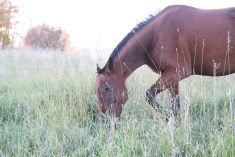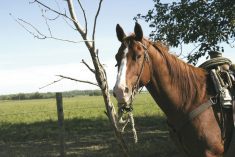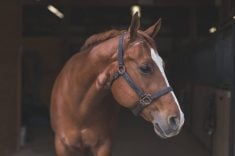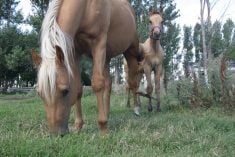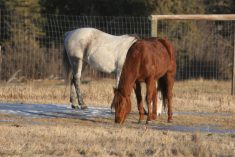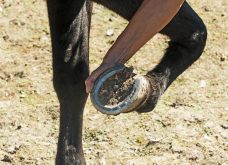The long-eared donkey is enjoying a popularity as the equine of choice, either as a pet, a companion for recreation or perhaps even as a performance animal.
Aside from their characteristic long ears, the donkey does share many commonalities with their close brethren, the horse, however, there are some unique considerations for the health and welfare of donkeys that stewards responsible for their care need to be aware of.
From an evolutionary standpoint donkeys are natural browsers, foraging for 16 to 18 hours a day consuming a “shrubby” diet on sparse barren lands in hot and arid environments. The digestive system and the feet of donkeys are superbly adapted to these seemingly harsh conditions from which they originate.
Read Also
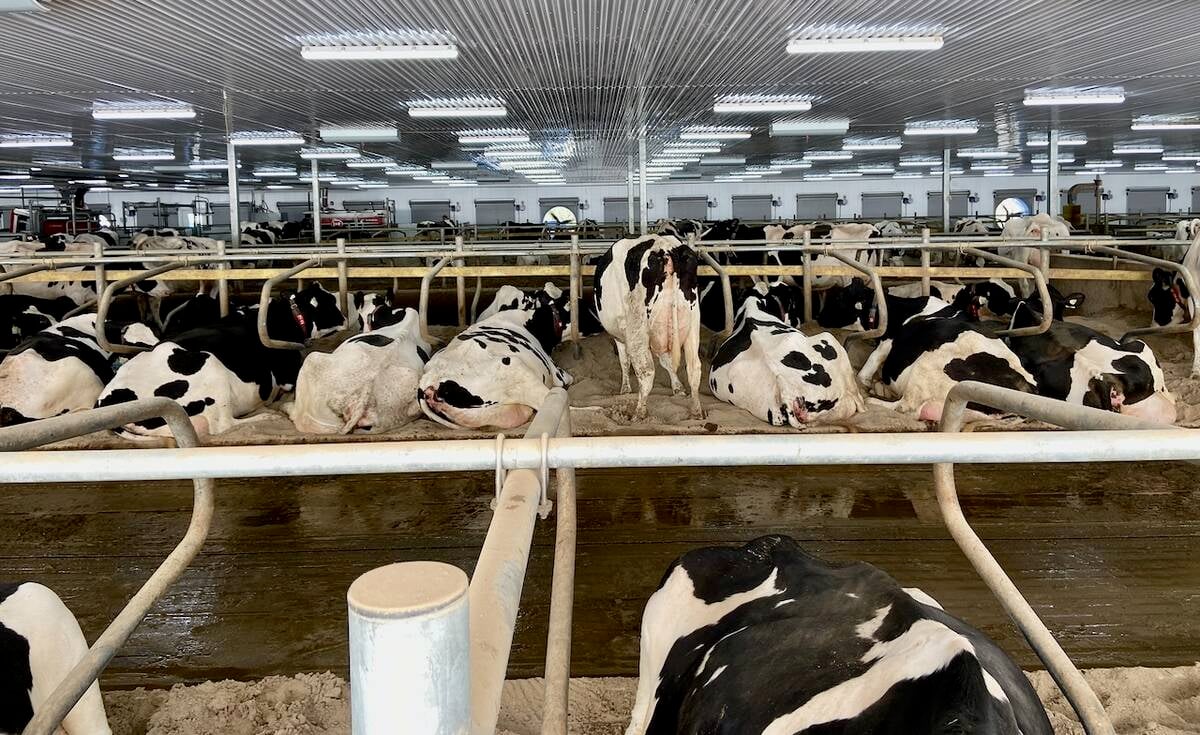
Lactanet moves to monthly on dairy genetic reports
Lactanet is now publishing monthly dairy genetic evaluations, giving dairy farmers more up-to-date data to make breeding decisions.
As a result, when placed into domestic temperate environments the “thrifty” donkey becomes vulnerable to the metabolic consequences of rich diets such as obesity, laminitis and problematic hoof conditions.
Diligently managing the donkey into a moderate state of body condition is key to maintaining the donkey in health. Donkeys are not able to tolerate rich feeds and will store excess fat in their neck or over their back. Timely adjustments to the donkey’s dietary practices can be made based upon scratching the little donkey along its neck and back daily, checking for the development of fat pockets. Ongoing critical evaluation of the donkey’s body condition is an advantageous way to avert metabolic health issues related to obesity and support vital hoof health and soundness.
Ideally, donkeys require about 1.5 per cent of their body weight in dry matter for maintenance and need to eat “little” and often i.e. trickle fed throughout the day with near-constant access to high-fibre plant matter. In situations where grass is plentiful, it usually becomes necessary to restrict grazing and replace a percentage of the donkey’s pasture diet with dried forage. Straw is often thought of as bedding for animals and not an acceptable feed source.
However, research from the U.K. has shown clean, fresh barley straw to be an ideal feed source for the donkey with a high-fibre, low-protein and sugar and/or starch nutrient profile. Donkeys can nibble on it all day without gaining weight. If barley straw is not available then either wheat or oat straw or mature grass hays may be sufficient choices dependent upon the condition of the donkey. Forage analysis of feedstuffs offer greater insight when selecting between forage types.
Generally pasture turnout and hay intakes require further management to avoid unwanted weight gains. To this end, restricted grazing, dry-lotting, hay nets and innovative slow feeders can be utilized. If donkeys are kept on small paddocks or dry lots, it is useful to provide them with plenty of enrichment including safe shrubbery to browse upon.
Donkeys tend to be quite particular about their water and clean, palatable water is essential for the health of a donkey, especially when eating a diet high in fibre and dry matter. Donkeys, like horses, also require free-choice salt and mineral licks.
From a health perspective, routine care of the donkey is comparable to that of a horse. Although donkeys and horses share many similar medical conditions, donkeys tend to show illnesses of pain and discomfort less frequently due to their stoic natures. This leads to difficult diagnostics for both owner and veterinarian. Veterinarians will take a call out to a dull donkey very seriously as it could potentially be a very sick animal, and it is important for caretakers to note even the subtlest of changes in the donkey’s behaviour. Dullness and depression may be the only subtle symptoms exhibited. Other than inappetence, general signs of discomfort in the donkey can include strained facial expressions, an unusual postural stance indicative of foot discomfort, head shaking, and tail swishing. Ill donkeys tend to “sham eat” — meaning they look like they’re eating yet they are not taking in any food. Donkeys that stop eating quickly become at risk for a potentially life-threatening condition called hyperlipaemia. Stressors that can trigger hyerlipaemia in the donkey include obesity, pain, travel, change of diet or environment or loss of a companion.
Due to their desert ancestry, the donkey’s hoof is distinctly different from that of the horse and ideally the donkey benefits from timely hoof care every four weeks. Donkeys exposed to rich sugar-laden diets or chronic wet conditions are more prone to the secondary outcomes of smouldering laminitic conditions such as foot abscesses, seedy toe (weak hoof walls) and thrush (infection of the frog and sole). Diligent foot care is a must in our sweet long-eared friends.
Donkeys are asymptomatic carriers of the lungworm parasite, which means although they may not show any signs, their pony and horse pasture mates may develop respiratory disease or coughing. A special fecal test called a Baerman is needed to specifically diagnosis the lungworm infection. Once diagnosed the lungworm can be easily treated with standard anti-parasitic medications.
Designed for its desert origins, the donkey’s hair coat lacks the necessary oils to “waterproof” and effectively shed rain or snow. As a result, donkeys are highly susceptible to hypothermia and death during periods of inclement weather. Hypothermia during periods of wet, cold weather is a common yet poorly recognized cause of death in donkeys. An easily accessible covered shelter is imperative to a donkey’s well-being in Western Canada.
Companionship with another donkey is extremely important to the psyche of the donkey. The emotional bond can be so strong that upon the loss of their companion the surviving donkey can experience significant distress, depression, and/or anxiety showing inappetence, persistent wandering, pacing and braying. Therefore, should one donkey pass away, leave allowances for the remaining donkey to remain with the body and hopefully “understand” what has happened.
The mental and emotional makeup of a horse and a donkey differ. This is undeniable. Donkeys have a strong sense of self-preservation. This cautious nature is often confused with stubbornness. Patience and understanding are admirable qualities when training the donkey.
Perhaps it is this interesting mentality in combination with their generally kind demeanour and colourful personalities that appeals to the growing number of donkey fanciers.




